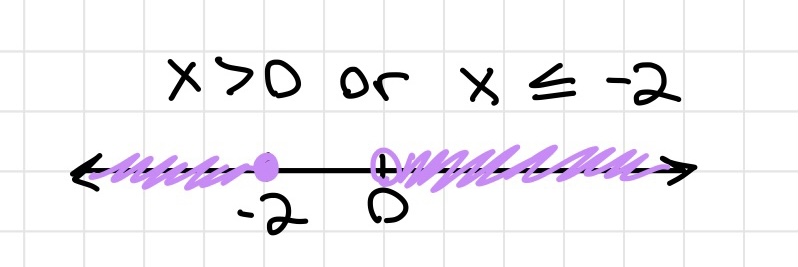Inequalities

Graph of an inequality on a coordinate plane

Open and Closed Holes/Circle
- An open hole/circle represents greater/less than (> <)
- An closed hole/circle represents greater/less than or equal to (≥ ≤)
















































